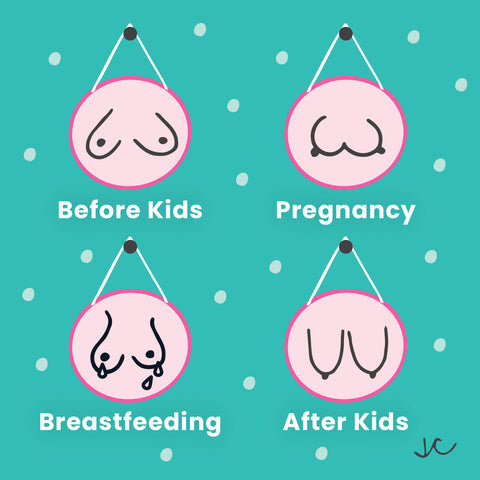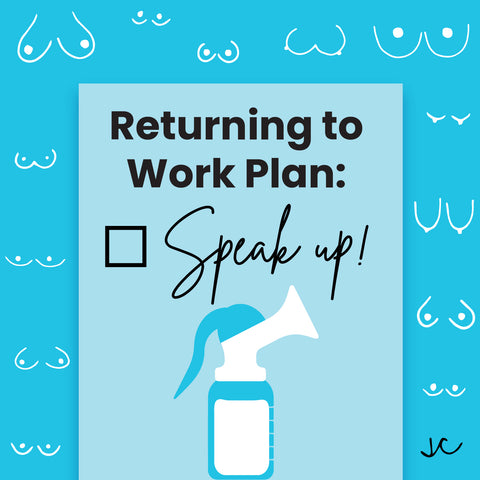Everything You Need To Know About Mammograms

Being breast-aware is so important.
This means getting to know your breasts. And we mean really getting to know them.
We’re huge advocates for checking our Boobies regularly – we like to do it on the first of every month – so we’re as familiar as possible with how our Boobs look and feel. And to know what’s “normal” for us.
Because breast cancer is the second most common cancer among women in the USA, checking your breasts and having regular breast screenings are crucial for early detection. Making it easier to treat breast cancer.
Of course, every Boobie is different, and knowing when you should start having breast screenings isn’t a one size fits all kinda answer. That’s why we’re here to help. We’re going to break down everything you need to know about mammograms, so you can feel confident and calm when you head off to get your beautiful Boobs checked.
What is a mammogram?
A mammogram is a breast screening. It’s a super important step in getting your Boobies checked for possible signs of breast cancer.
Essentially, it’s an x-ray for your breasts. Mammograms can detect tumors that are too small for you to feel when you check your Boobs yourself, or for doctors to feel. Tumors can be cancerous (malignant) or non-cancerous (benign) and a mammogram can detect both. These medical miracles can catch some breast cancers early – making it easier for them to be treated and keep you safe and healthy.
There are two kinds of mammograms that are performed:
- Diagnostic mammography – this kind of screening is performed when a breast problem has been discussed (for example finding a lump or other noticeable change in your breast) either during self-examination or by a doctor
- Screening mammography – this is a regular, standard screening to look for signs of breast cancer when there have been no symptoms or signs, but the woman meets the screening guidelines in their area or they are seen to be high risk for developing breast cancer
Both mammograms use the same machine, but the amount of radiation used in a diagnostic screening is higher, and a diagnostic screening takes a little longer.
Mammograms can be 2-D or 3-D depending on what the doctor is looking for. You should always speak to your doctor about which mammogram is right for you.
When should you get a mammogram?
The American Cancer Association recommends that women should be given the choice to get an annual mammogram starting at the age of 40. However, if you are seen to be at average risk of developing breast cancer, then it’s recommended that ALL women over the age of 35 have one annually.
Of course, if you are high risk OR if you or your doctor suspects there might be an issue, you will be recommended to have one no matter how old you are. You might also be asked to have more aggressive breast cancer screening such as breast MRIs and ultrasounds in addition to a mammogram.
Have a conversation with your doctor to determine your breast cancer risk. You’ll discuss things like your medical and reproductive history, and if there is any history of breast cancer in your family. Women of African American or Ashkenazi Jewish descent may be of higher risk.
How to prepare for your mammogram
If you’ve never had a mammogram before, knowing what the screening is going to be like can help with any anxiety or worry you might be feeling.
Before your screening, speak to your doctor to ask any questions or express any concerns. You can also speak to your technician and let them know your feelings. It’s also important to tell your technician if you’ve spotted any changes since your doctor’s appointment.
What happens during a mammogram?
You’ll first be asked to remove your shirt and bra, and your technician will give you a wrap or cover-up. Your mammogram is a special kind of x-ray machine, which you stand up for (if you can.) The screening starts by placing your breasts – one at a time – onto a plastic platform.
Next, your technician will lower a second plastic plate that will press down on your breast. This shouldn’t hurt, but it might feel a little uncomfortable. This part of the screening doesn’t last very long.
Flattening out your Boobies helps spread the breast tissue out, making it easier for your doctor to spot any tumors or other breast cancer symptoms.
When your screening is over, your technician will check the x-rays to make sure they don’t need to be retaken, and then a doctor will read your results.
It can take a bit of time to get your results (this really varies), but you can ask how long it will take to get them.
Here are some other helpful things you need to know and tips for getting a mammogram:
- Let your technician know if you’re breastfeeding or you’re pregnant (or think you might be)
- Mammograms are relatively fast (about 15-20 minutes for a screening mammography).
- Discomfort is minimal. They shouldn’t hurt, but if you do feel any pain you should let your technician know
- It’s best to avoid having a mammogram during your period, as your Brave Boobies are more tender at this time. Aim to have yours 1-2 weeks before your period is due
- Try to avoid caffeine in the week leading up to your mammogram
- Don’t wear deodorant on the day of your screening as it can interfere with imaging
- Wear loose clothing that is soft and comfortable and easy to be removed. You’ll have to remove your clothing from the waist up, so avoid wearing a dress or jumpsuit!
- Don’t wear a necklace or other non-essential jewelry during your test
- Keep a record of every mammogram for future reference
Are mammograms safe?
Mammograms are x-rays, so they do use radiation. However, the dosage is very low and doesn’t increase your risk of developing cancer. And as mammograms can help detect cancer early, the benefits very much outweigh the risks.
There have been cases of false negatives (where a screening showed no cancer even though there was cancer there) AND false positives (when they showed signs of cancer where there wasn’t any). So, although they are not absolutely, 100% perfect, they are an essential diagnostic tool. But, you know your body best Breastie, and if you’re ever concerned about the results then you must let your doctor know.
You've got some Brave Boobies
Hey, Breastie. We know the thought of having a breast screening can be scary. But mammograms are crucial and potentially life-saving. In fact, multiple studies have shown a reduction in breast cancer deaths (ranging up to 40%) with mammograms. So you should never put off a mammogram if it’s been recommended by your doctor.
You’re so brave Breast Friend, and we’re here for you whenever you need us. You’ve got this courageous mama!
At Titty City Design, we believe that every boobie is beautiful, and that should be celebrated. We are a female owned and operated, small business here to spread self love and body positivity with our line of products for the home. A portion of our proceeds go to help support postpartum women and breast cancer patients.
Brave Boobies Collection







